This article was medically reviewed by Ronn Callada, RN, MS. Ronn Callada, ANP, RN is a Nurse Practitioner at the Memorial Sloan Kettering Cancer Center in New York. Ronn is also part of the adjunct faculty at New York University in nursing. He received his MS in Nursing from Stony Brook University School of Nursing in 2013.
There are 10 references cited in this article, which can be found at the bottom of the page.
wikiHow marks an article as reader-approved once it receives enough positive feedback. This article received 14 testimonials and 90% of readers who voted found it helpful, earning it our reader-approved status.
This article has been viewed 515,254 times.
Fainting is a sudden loss of consciousness for a short period of time that is usually followed by a complete return to a normal state of wakefulness.[1] Fainting, for which the medical term is syncope, is caused when the blood supply to the brain is temporarily inadequate due to a drop in blood pressure. In most cases, people regain consciousness within a minute or two after fainting.[2] The cause of fainting may be any number of things, ranging from dehydration to standing up suddenly after prolonged sitting to a serious heart condition. But what do you do when you see someone faint or you yourself faint?
Steps
Dealing With Another Person Fainting
-
1Help them down. If you notice a person starting to faint, try to catch them and slowly lower the person to the ground. When people faint, they are unable to protect themselves with their hands when they fall. Although typically a person who faints does not incur serious injuries, preventing hitting the ground will protect them. Of course, do this only if it is safe for you--if the person who is fainting is much larger than you, for example, this may put you into a hazardous situation.[3]
-
2Position the person on their back. Tap or shake the person, to see if they have regained consciousness. In most cases, people who have fainted regain consciousness quickly (usually between 2 minutes and 20 seconds).[4]
- When people faint, they fall, which brings the head to the same level of the heart. In this position, it is easier for the heart to pump blood to the brain. Therefore, recovery can be just as sudden as fainting is.
- If the person regains consciousness, inquire about any pre-existing symptoms or conditions that may have caused the fainting. Symptoms such as headache, seizure, numbness or tingling, chest pain or trouble breathing are all worrisome. In such cases, emergency services (EMS) should be called.[5]
Advertisement -
3Help the person rest if they regain consciousness. Loosen any constrictive clothing (like a tie or collar) on the person to make them comfortable.[6]
- Let the person lay on the ground and rest for at least 15-20 minutes. This provides enough time for blood to return to the brain.
- Give the person room to breathe and fan the victim with fresh air. If fainting happens in a public place, crowds typically gather in order to see what happened. Ask people to back up unless they are actually helping the situation.
- Give the person water and/or food once they are conscious and stable; food and water will help revive them. Dehydration and hypoglycemia (low blood sugar) are common causes of fainting.
- Do not let the person get up too quickly. Encourage them to stay lying down for a few minutes. This will allow blood flow to the brain to fully regain. Additionally, abrupt rise may precipitate another fainting episode. Once people have regained consciousness, they may try to brush it off by standing and trying to walk too soon after the incident.
- If the person has a head injury, additional symptoms (such as difficulty breathing, chest pain, severe headache, etc.) or a preexisting condition (pregnancy, heart disease, etc.), they should consult a doctor.
-
4Check for a pulse if the person does not regain consciousness quickly. Call or ask someone else to call EMS. This is also an opportunity to have someone look for an Automatic External Defibrillator (AED). Assess the pulse at the person's neck because that is where it will be the strongest. Place your index and third fingers on the neck of the person to the side of the windpipe and feel for the pulse.[7]
- Assess the pulse only on one side of the neck at a time. Checking both sides can compromise the blood supply to the brain.
- If there is a pulse, try to raise the person’s legs a couple of feet above the ground. This helps blood flow back to the brain.
-
5Initiate CPR if no pulse is found. If you're not familiar with CPR, consider seeing if anyone around you is a medical professional.[8]
- Kneel next to the person.
- Place the heel of one hand at the center of the person’s chest.
- Place the other hand on top of the first.
- Be sure not to bend your elbows.
- Use your whole upper body weight and compress on the person’s chest.
- The chest must be compressed as you push straight down by at least 2 inches.
- Push down on the chest at about 100 compressions each minute.
- Continue chest compressions until EMS arrives and takes over.
-
6Stay calm and reassure the victim. Staying composed and in control of the situation can make all the difference.
Dealing With Your Own Fainting
-
1Learn to recognize the signs of an oncoming fainting spell. One of the best things you can do if you are prone to fainting is to learn to recognize the signs. Keep a notebook or log of your own symptoms if you are prone to fainting. If you can tell in advance that you are about to faint, you can take the proper safety precautions and potentially avoid a serious injury. Signs that you may be about to faint include:[9]
- Nausea, dizziness or lightheadedness
- Seeing white or black spots or experiencing blurry or tunnel vision
- Feeling very hot or sweaty
- Having an upset stomach
-
2Find somewhere to lie down if you feel about to faint. Raise your legs to encourage blood flow to the brain.[10]
- If it's not possible to lie on the ground, sit down and put your head between your knees.
- Rest for about 10-15 minutes.
-
3Breathe deeply. Take deep breaths in through your nose and out through your mouth. This can also have a calming effect.
-
4Call for help. Calling for help is a good idea because it alerts other people to your situation. Another person can then catch you if you fall, place you in the recovery position, and call a doctor if necessary.
-
5Try to stay safe if you do faint. If you have recognized that you are about to faint, it's important that you remove yourself from any potential dangers and take some steps to minimize the severity of the faint.[11]
- For example, try to position your body such that you fall out of the path of sharp objects.
-
6Take some preventative steps to avoid fainting in the future. In some cases, it is possible to prevent a potential fainting spell by taking the proper precautions and avoiding possible triggers. Some preventative steps include:[12]
- Staying hydrated and eating regularly: It is essential to stay hydrated by drinking plenty of water and other fluids, especially on hot days. Eating regular, healthy meals can help ameliorate feelings of dizziness and weakness associated with hunger.
- Avoiding stressful situations: For some people, fainting is brought on by stressful, upsetting or anxiety-producing situations. Thus, it is important to stay calm by avoiding these kinds of situations as much as possible.
- Avoiding drugs, alcohol and cigarettes: These items are full of toxins that are generally unhealthy and can induce fainting in some people.
- Avoiding changing position quickly: Fainting is sometimes caused by sudden movement, such as standing up too quickly after sitting or lying down. Try to stand up slowly, and hold onto something stable for balance, if possible.
-
7Consult a doctor if the problem continues. If you find yourself fainting on a semi-regular or regular basis, it's important to consult your doctor. The fainting may be a symptom of a more serious underlying issue, such as heart problems or orthostatic hypotension.[13]
- You should also contact the doctor if you hit your head while fainting, are pregnant, suffer from diabetes, a heart condition or another underlying issue, or if you experience accompanying symptoms like chest pain, confusion or shortness of breath.
- Your doctor will evaluate your medical history to figure out why you have fainted. Further tests such as an electrocardiogram (EKG) and blood work may be performed also.
Expert Q&A
-
QuestionIs it a must to do mouth to mouth resuscitation?
 Jonas DeMuro, MDDr. DeMuro is a board certified Pediatric Critical Care Surgeon in New York. He received his MD from Stony Brook University School of Medicine in 1996. He completed his fellowship in Surgical Critical Care at North Shore-Long Island Jewish Health System and was a previous American College of Surgeons (ACS) Fellow.
Jonas DeMuro, MDDr. DeMuro is a board certified Pediatric Critical Care Surgeon in New York. He received his MD from Stony Brook University School of Medicine in 1996. He completed his fellowship in Surgical Critical Care at North Shore-Long Island Jewish Health System and was a previous American College of Surgeons (ACS) Fellow.
Board Certified Critical Care Surgeon If CPR is indicated, bystanders are directed to call 9-1-1, and then provide "Hands-Only CPR," while waiting for the ambulance to arrive. Hands-Only CPR is simpler to learn, and easier to do by untrained bystanders.
If CPR is indicated, bystanders are directed to call 9-1-1, and then provide "Hands-Only CPR," while waiting for the ambulance to arrive. Hands-Only CPR is simpler to learn, and easier to do by untrained bystanders.
Warnings
- Fainting can also be common during pregnancy, due to hormonal changes. In the later stages of pregnancy, the enlarging uterus can compress the blood vessels and affect the blood's return to the heart. This, in turn, can cause the pregnant person to feel faint.⧼thumbs_response⧽
- Fainting is more common in women than men. It is also more common in people older than 75 years.[14]⧼thumbs_response⧽
References
- ↑ Gauer RL. Evaluation of Syncope. Am Fam Physician. 2011;84(6):640-650.
- ↑ http://nhs.uk/conditions/Fainting/Pages/Introduction.aspx
- ↑ https://www.betterhealth.vic.gov.au/health/conditionsandtreatments/fainting
- ↑ http://www.nhs.uk/Conditions/Fainting/Pages/Symptoms.aspx
- ↑ https://kidshealth.org/en/teens/fainting.html
- ↑ https://medlineplus.gov/fainting.html
- ↑ https://www.betterhealth.vic.gov.au/health/conditionsandtreatments/fainting
- ↑ https://cpr.heart.org/en/resources/what-is-cpr
- ↑ http://www.nhs.uk/Conditions/Fainting/Pages/Symptoms.aspx
About This Article
To deal with someone fainting, start by situating them on their back, since having their head and heart at the same level will revive them more quickly. Then, if the person doesn’t regain consciousness after 2 minutes, call 911 and follow the operator’s instructions until emergency services arrives. For someone who does regain consciousness quickly, keep them on the ground for 15-20 minutes so blood can return to their brain. Additionally, give them food and water to address any dehydration or low blood sugar they may be experiencing. For information from our Medical reviewer on how to minimize your own risk of fainting, scroll down!
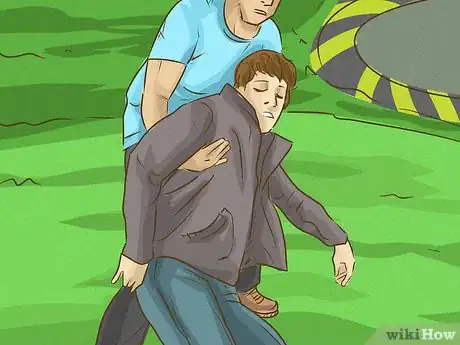
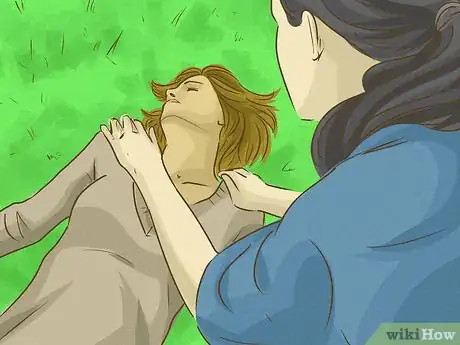
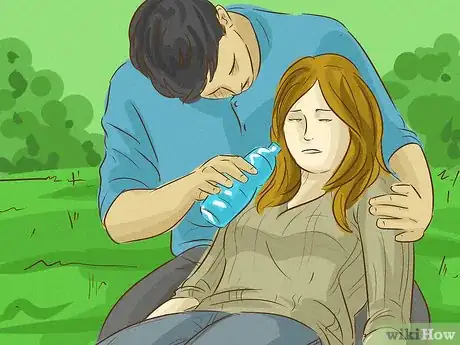




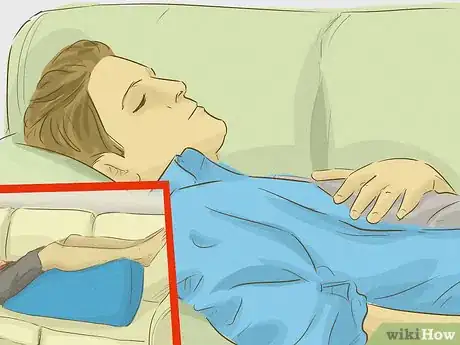
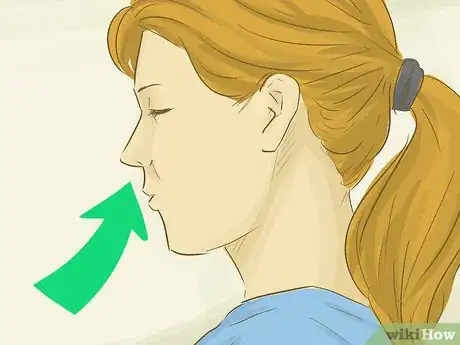
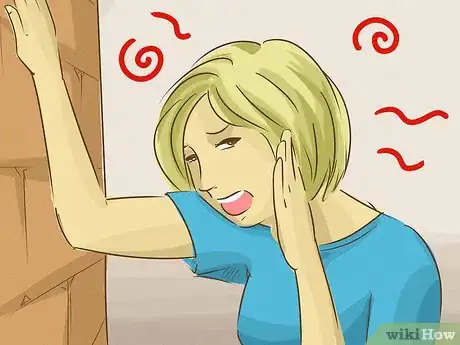
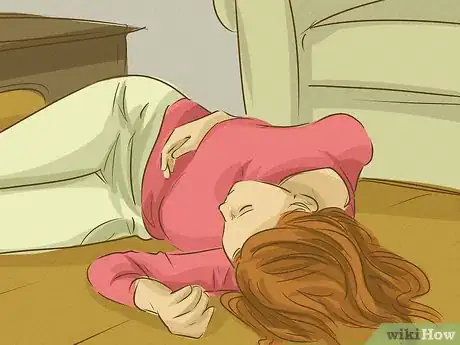
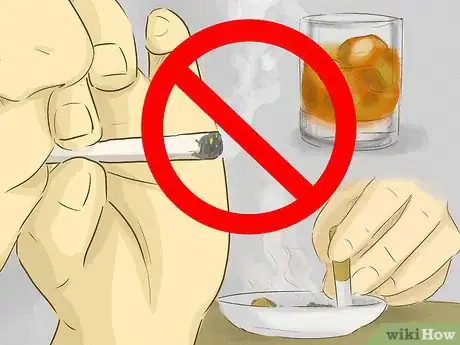
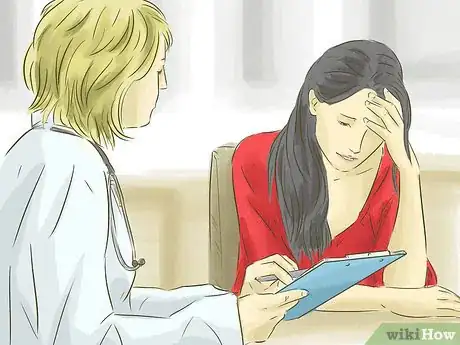
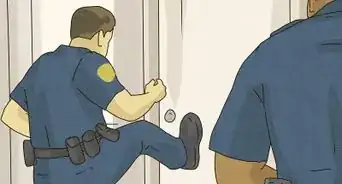


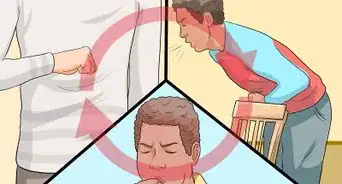



















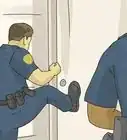

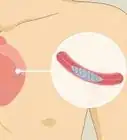




































Medical Disclaimer
The content of this article is not intended to be a substitute for professional medical advice, examination, diagnosis, or treatment. You should always contact your doctor or other qualified healthcare professional before starting, changing, or stopping any kind of health treatment.
Read More...